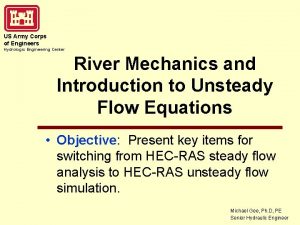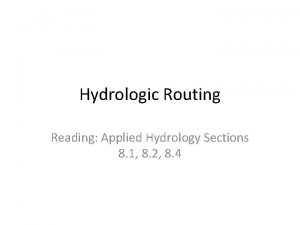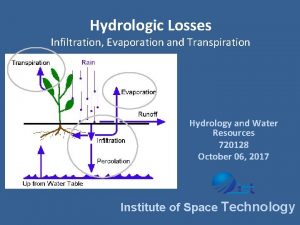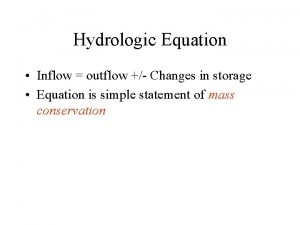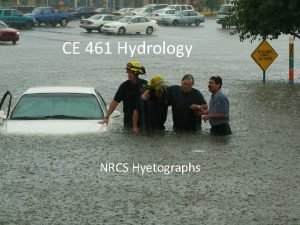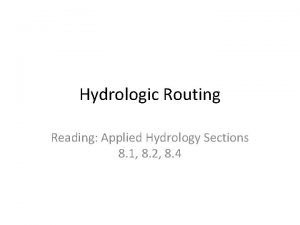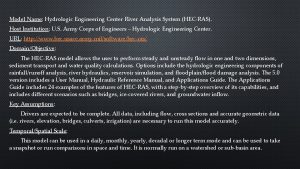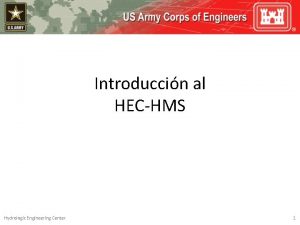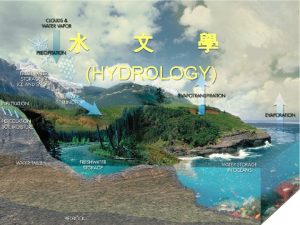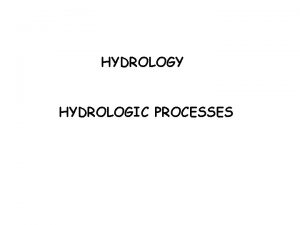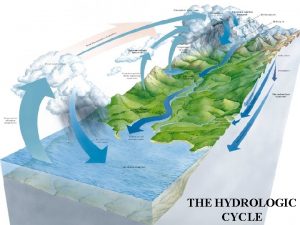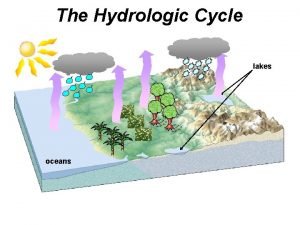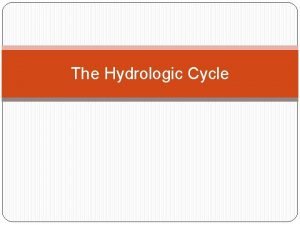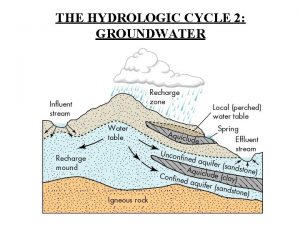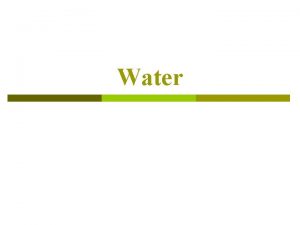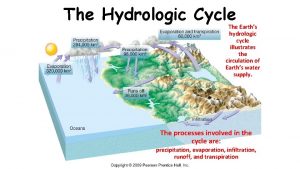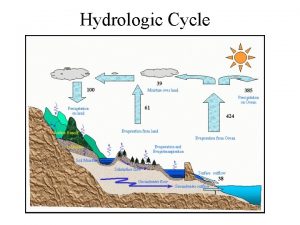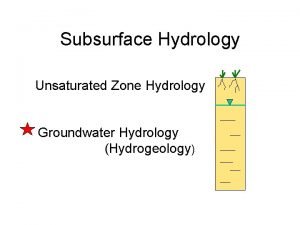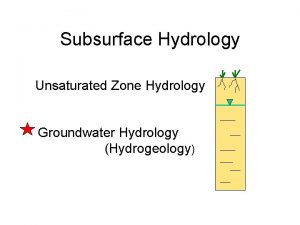Hydrologic Cycle Hydrology involves the study of the















- Slides: 15

Hydrologic Cycle Hydrology involves the study of the occurrence, distribution, movement, and quality of the earth's waters in atmospheric, surface, and subsurface environments. n Physical processes are shown in the following figures. n

Hydrologic Cycle Surface Processes In-Channel Processes Subsurface Processes


Terms and Definitions n n n Precipitation - Literally, water in solid or liquid form falling from the atmosphere to earth. Forms of precipitation include: snow (crystalline), sleet (grains of ice), hail (balls of ice), and rain (liquid form). Types of precipitation include convective, orographic, frontal, and cyclonic. Rainfall Depth - The total amount of rainfall that accumulates at-a-point (i. e. , rain gage) during a storm event. Rainfall Intensity - The rate or velocity of rainfall.

Terms and Definitions n n n Interception - Rainfall (precipitation) captured and stored on leaves, rooftops, etc. Depression Storage - Rain that becomes trapped in depressions (holes) in the land surface and subsequently evaporates or infiltrates. Evaporation - A diffusive process whereby water undergoes a change in state from liquid to vapor and rises from the land surface to the atmosphere. Evaporation occurs from water transpired by plants (evapotranspiration or, more simply, ET), bare soil, and open water bodies. Infiltration - Water movement across the air-soil interface (ground surface) into the underlying soil. Represents the major loss or abstraction of rainfall.

Terms and Definitions Runoff - Runoff is rainfall in excess of losses that retain the water within the watershed. n Runoff is water that flows overland through shallow and/or deep groundwater routes to exit the watershed at its outlet. n Direct Runoff -Runoff that represents an immediate response of the watershed to a rainfall event. n

Terms and Definitions n n Runoff Philosophies -These are different views about the dominant processes controlling direct runoff generation. Hortonian runoff is runoff due to rainfall in excess of infiltration, i. e. , surface or overland flow. Methods based on this philosophy generally assume the entire watershed contributes runoff. Hortonian runoff occurs from impervious and clayey topsoil watersheds.

Terms and Definitions n n Saturation overland flow occurs where the soil saturated hydraulic conductivity exceeds the rainfall intensity, depth to water table is shallow, and after a period of rain, the groundwater table mounds to the air-soil interface. Continuing rain occurs on saturated soil, cannot infiltrate, and goes directly to surface runoff. Saturation overland flow differs from Hortonian overland flow in that with Hortonian overland flow the soil is saturated from above by infiltration, while with saturation overland flow it is saturated from below by rising subsurface flow elevations. Saturation overland flow occurs at the bottom of hillslopes, near streams, and in areas with shallow groundwater, such as along the coast.

Terms and Definitions n n Variable source area or partial area denotes the area of a watershed actually contributing flow to the stream at any time. This philosophy recognizes that not all of a watershed contributes subsurface flow or saturation overland flow to a stream during a storm. The contributing area expands during a storm and contracts between storms, or during lulls within a storm. This also is known as dynamic watershed response.

Terms and Definitions Rainfall Excess - Rainfall that becomes direct storm runoff. n Stormwater - Runoff generated by a precipitation (rainfall) event. n Hydrograph - A hydrograph is a time series plot of discharge passing a point along the drainage network. n

Stormflow Hydrograph

Terms and Definitions n n Streamflow - Flow in a stream. The streamflow hydrograph is composed of the stormwater hydrograph and baseflow (recharge from groundwater). Runoff Volume - The volume of water, typically expressed in watershed inches or millimeters, that occurs as direct runoff. It is the volume under the stormflow hydrograph divided by the watershed area. Runoff Peak - The maximum, or peak, flowrate of a stormwater hydrograph. This is the value typically selected as the design flowrate for sizing open channels, culverts, and storm sewers. Design Flow - The flowrate used in hydraulic calculations to size sewers, channels, etc.

Urbanization Impacts to the Hydrologic Cycle An important part of this course is urban stormwater management. n Why is this important? n Stated differently, what are the impacts of urbanization to the hydrologic cycle? n

Urbanization Effects Certain processes are reduced. And some processes are increased.

Challenge for the Semester Now that we have seen some of the impacts of urbanization, can we manage stormwater to minimize both individual and cumulative impacts? n If so, how? Let us learn! n My challenge to each of you—set as a personal goal to leave this class with the know-how and confidence to plan and design effective stormwater management systems. n
 Water cycle the hydrologic cycle
Water cycle the hydrologic cycle Hydrology unit study guide
Hydrology unit study guide Hydrologic engineering center
Hydrologic engineering center Difference between channel routing and reservoir routing
Difference between channel routing and reservoir routing Hydrologic routing
Hydrologic routing Infiltration
Infiltration Write the inflow as a formula
Write the inflow as a formula Hydrologic abstractions
Hydrologic abstractions Hydrologic routing and hydraulic routing
Hydrologic routing and hydraulic routing Rickley hydrologic
Rickley hydrologic Hydrology continuity equation
Hydrology continuity equation Hydrologic engineering center
Hydrologic engineering center Applied hydrology
Applied hydrology Hydrologic engineering center
Hydrologic engineering center Hydrologic engineering center
Hydrologic engineering center Therbligs symbols
Therbligs symbols


